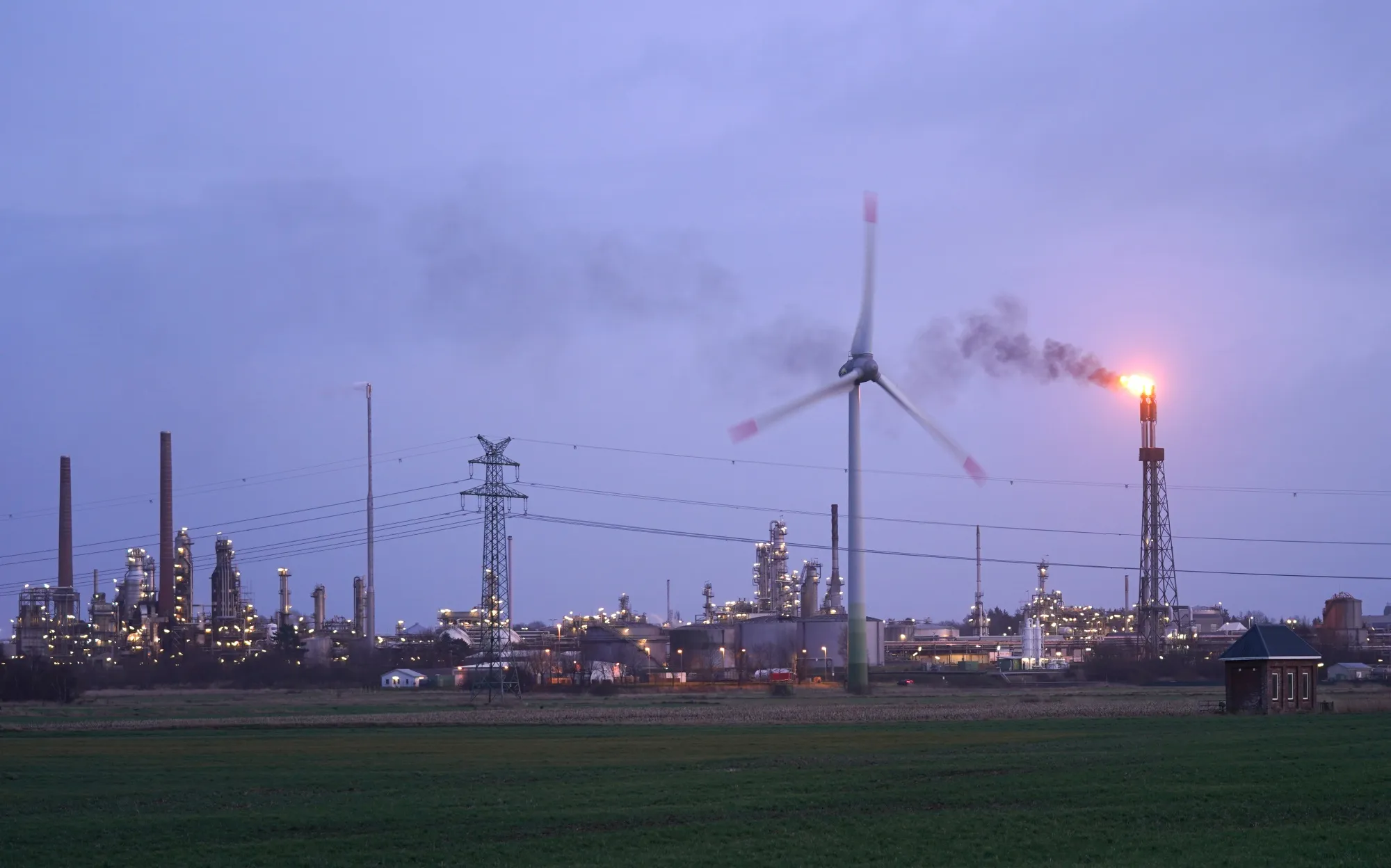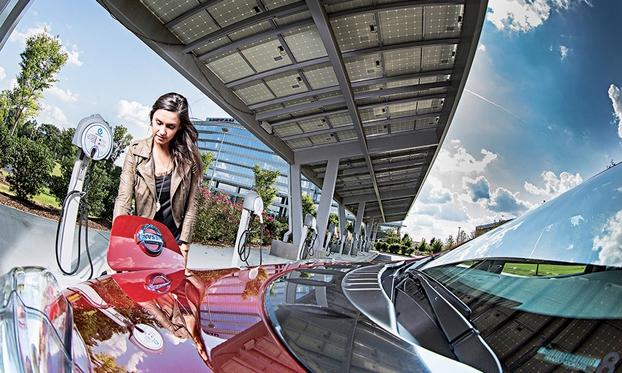It was mid March the last time I wrote. Much has obviously happened since then and each day is an adventure: Defined as “outcome unknown”. It is a challenge to know where to start…and end! A wide variety of news has occurred that relates to the topics I cover and I will try to publish here a few that may provide a glimmer of hope in an otherwise pretty dismal outlook for not only the health of our planet but our public health and the social order.
I am going to start with a few articles that describe some large overarching items. There’s always both good and bad news so let’s start with the downside and then go to the upside…
I am excerpting a large part of this first article because so much of it is revealing the intertwined consequences of global temperature rising 3 degrees Celsius which is where we are headed pretty much no matter what we do.
From The New York Times
Climate Change Could Become a Global Economic Disaster
New warnings from financial firms and insurers point to a future defined by profound risks to the global economy from heat, storms and other disasters.

April 10, 2025
Morgan Stanley casually observed that the planet was all but certain to blow past the goal of limiting the global average temperature rise to no more than 2 degrees Celsius above preindustrial levels, a threshold laid out in the Paris Agreement.
The company’s “base case,” the report said, was that the world was moving toward a temperature increase of 3 degrees Celsius.
A constant challenge when talking about global warming is appreciating that little numbers — a rise in temperatures by just a single degree, for example — represent utterly profound changes.
At 3ºC of warming, rising seas are likely to inundate many coastal cities, including metropolises like Rio de Janeiro, Shanghai, Miami and Osaka, Japan.
A litany of other problems, including extreme weather, unrelenting heat waves, the proliferation of insect-borne diseases, widespread species extinction and declines in crop yields, would also get worse.
By 2049, costs from the effects of climate change could total more than $38 trillion annually, according to a paper by scholars at the Potsdam Institute for Climate Impact Research.
In the United States alone, climate change is expected to wipe away $1.47 trillion in value from real estate around the country by 2055, according to a February report from First Street, which models climate risk.
Beyond the immediate losses inflicted by severe weather and flooding, a decline in output is likely as crops fail and extreme heat strains supply chains.
Climate change is simply making some things uninsurable.
“This is not a one-off market adjustment,” he wrote in his post. “This is a systemic risk that threatens the very foundation of the financial sector. If insurance is no longer available, other financial services become unavailable too. A house that cannot be insured cannot be mortgaged. No bank will issue loans for uninsurable property. Credit markets freeze. This is a climate-induced credit crunch.”
At that point, Thallinger wrote, “the financial sector as we know it ceases to function.”
“And with it,” he added, “capitalism as we know it ceases to be viable.”
On the other hand there’s this article that points to a different direction if our leaders are willing to take us in THIS direction. Of course, it is up to US to MAKE THEM take us here.
From Reuters
Ambitious Climate Action Could Boost Global 2040 GDP by 0.2%, says OECD Study
March 26, 2025

Accelerated climate action could boost global GDP by 0.2% by 2040 compared with current policies
well-designed climate policies not only cut emissions but could enhance efficiency, productivity and innovation -potentially raising output by an amount equivalent to the size of Sweden’s economy.
Investing in clean energy and efficiency drives productivity and innovation, offsetting the economic impact of policy-driven price and consumption changes, the study found. Reinvesting carbon revenues could further boost GDP and build public backing for climate action
“Anyone who dismisses climate action in these turbulent times as being expensive, onerous or superfluous cannot count,” German Foreign Minister Annalena Baerbock said in a statement.
The article above talks about the impact increased heat will have on crops reducing food supplies from farming the land. The next article relates the crisis that climate change is having on plankton which is the basis of sea life further impacting food supplies.
From The New Your Times
Rising Temperatures Are Scrambling the Base of the Ocean Food Web
Scientists are gaining new insights into how plankton supports life on Earth — just as climate change is changing everything.
March 3, 2025

“Do you like breathing? Do you like eating? If your answer is yes for either of them, then you care about phytoplankton,”
Phytoplankton form the foundation of the marine food chain, and climate change is shaking that foundation.
From E&E News
84% of World’s Coral Reefs Hit by Worst Bleaching Event on Record
It’s not clear when the current crisis, which began in 2023 and is blamed on warming oceans, will end.
ASSOCIATED PRESS | 04/24/2025

“We may never see the heat stress that causes bleaching dropping below the threshold that triggers a global event,” said Mark Eakin, corresponding secretary for the International Coral Reef Society and retired chief of NOAA’s Coral Reef Watch program. “We’re looking at something that’s completely changing the face of our planet and the ability of our oceans to sustain lives and livelihoods,” Eakin said.
Last year was Earth’s hottest year on record, and much of that heat is going into oceans. The average annual sea surface temperature of oceans away from the poles was a record 20.87 degrees Celsius (69.57 degrees Fahrenheit).
That’s deadly to corals, which are key to seafood production, tourism and protecting coastlines from erosion and storms. Coral reefs are sometimes dubbed “rainforests of the sea” because they support high levels of biodiversity — approximately 25 percent of all marine species can be found in, on and around coral reefs.
From The New York Times
https://www.nytimes.com/2025/03/27/climate/global-sea-ice-record-low.html
Global Sea Ice Hits a New Low
The data comes after researchers reported that the past 10 years have been the 10 hottest on record.
March 27, 2025

Sea ice plays many important roles for the global climate: Its white surface can reflect energy back into space, helping the planet cool. It also acts like a blanket for the ocean, insulating it and preventing ocean heat from reaching the atmosphere. Less sea ice means more heat goes in Earth’s systems, warming the atmosphere and the oceans.
Now that you’re completely freaked out how about some good news?
From E&E News
Clean Energy Transition Will Persist Under Trump, Analyses Say
The president’s efforts to dismantle climate policies won’t stop renewables from rising or fossil fuels from slowing, according to outlooks from the U.S. Energy Information Administration and BloombergNEF.
04/16/2025

Notably, EIA sees a massive expansion in renewable generation regardless of the fate of EPA’s power plant rules. Renewable generation is expected to more than triple by 2050, becoming the country’s leading source of power generation by the early 2030s.
Those trend lines mirror BNEF’s findings. The future of U.S. clean power technologies “remains bright” over the coming decade, according to the outlook. Solar capacity is expected to triple by 2035 while wind capacity is expected to double over the next 10 years.
From CleanTechnica
92.5% of New Power Capacity Added Worldwide in 2024 Was from Renewables
March 30, 2025

This is not even a competition anymore. And that’s great, because we’re still running behind schedule when it comes to decarbonizing the world.
Those 585 GW also represent 15.1% annual growth, which the International Renewable Energy Agency (IRENA) indicates was record growth.
Now, to the bad news. The downside is that the world needs to reach 11,200 GW (11.2 TW) of power capacity from renewables by 2030 in order to meet global climate goals, and to reach that will require 16.6% annual growth.
New renewable energy capacity was dominated by China, with the country accounting for almost 64% of global capacity additions. (What would the industry do without China?) Together, G7 countries accounted for 14.3% of new capacity, while G20 countries accounted for 90.3% of new capacity (of course, 64% coming from China, as already mentioned).
“The continuous growth of renewables we witness each year is evidence that renewables are economically viable and readily deployable. Each year they keep breaking their own expansion records, but we also face the same challenges of great regional disparities and the ticking clock as the 2030 deadline is imminent,” IRENA Director-General Francesco La Camera concluded.
“Renewable energy is powering down the fossil fuel age. Record-breaking growth is creating jobs, lowering energy bills and cleaning our air. Renewables renew economies. But the shift to clean energy must be faster and fairer — with all countries given the chance to fully benefit from cheap, clean renewable power,” United Nations Secretary-General António Guterres added.
From Bloomberg
How Clean Energy Escaped the Boom-and-Bust Cycle
The shift toward renewables is accelerating in some places, while Big Oil is investing less.
April 22, 2025

The reality provides less cheer to either side of the debate. The shift toward clean power hasn’t stopped, or even slowed. In many quarters, particularly energy storage, electric vehicles and solar, it’s accelerating with renewed vigor. Investors aren’t opening their checkbooks to lavish more money on fossil fuels, either. What we’re seeing instead is a continued shift in spending from dirty to clean energy — one that’s too relentless to gladden the fossil fuel sector, but too slow to hit net-zero targets.
This shift suggests that oil and gas is now a sunset industry, managing a long-term, if occasionally profitable, decline.
From Automotive News
https://pages.pagesuite.com/2/0/209146af-1c24-4464-abcc-21d3cc8ee201/page.pdf
How BYD’s 5-Minute Charging Stacks Up
March 24, 2025

BYD is taking things to even greater heights, staking claim to a system it said will make it as quick to charge an electric vehicle as to refuel a gasoline car. From “more features for no more price” and “smart driving for all,” BYD can add “charging as fast as refueling” to its marketing slogans, helping it to capture further share from legacy automakers and more direct rivals such as Elon Musk’s Tesla.
Despite all the doom and gloom from the articles at the beginning of this blog, there is R&D continuing that is creating a gleam of light that maybe, just maybe, we may be able to develop methods and processes that can help the planet reduce CO2 from the atmosphere and help avoid the worst possible outcomes that climate change is going to foist upon us. Now is no time to give up. As I said at the beginning, this journey is an adventure: for now anyway…outcome unknown.
From Science Daily
https://www.sciencedaily.com/releases/2025/02/250219111358.htm
New Process Gets Common Rocks to Trap Carbon Rapidly, Cheaply
February 19, 2025
Stanford University chemists have developed a practical, low-cost way to permanently remove atmospheric carbon dioxide, the main driver of global warming and climate change.
The new process uses heat to transform common minerals into materials that spontaneously pull carbon from the atmosphere and permanently sequester it. These reactive materials can be produced in conventional kilns, like those used to make cement.



